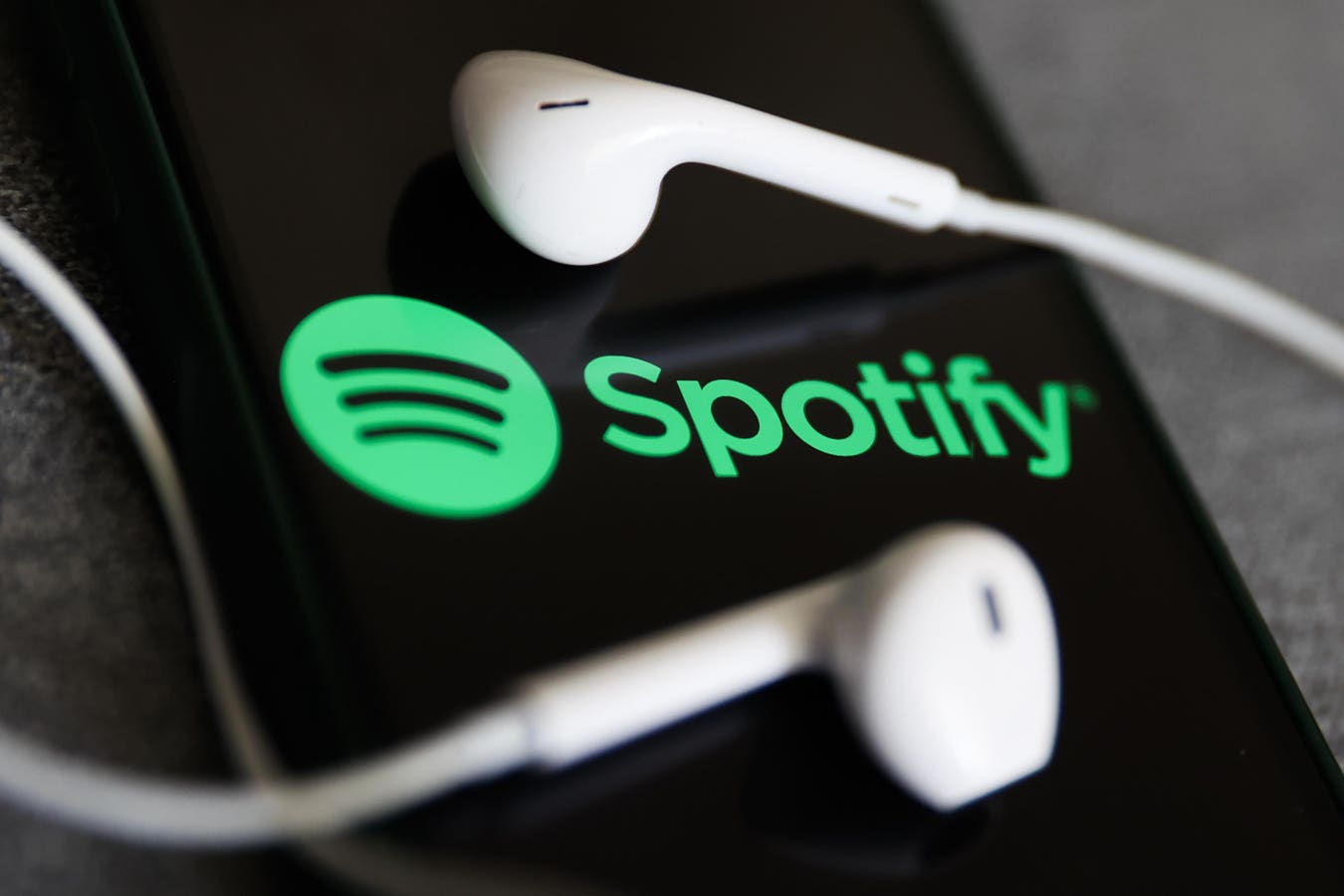Spotify will change its royalty payout model by early next year to include a minimum threshold of streams for a song to qualify for royalty payments, penalties for streaming fraud and restrictions on royalty payments for short “noise” tracks, as first reported by Music Business Worldwide. These changes are indicative of tectonic shifts in the music industry today and point the way to the future for streaming music services.
These changes all arise from one simple fact: the big streaming platforms have made it easier than ever for anyone to release music, and as a result (of that and various other factors), the volume of music submitted to Spotify and its competitors worldwide is unimaginably high—and accelerating. At this writing, more than 120,000 new tracks are uploaded to streaming services every day. To put that number in perspective, the total number of albums released per year in the 1980s, during the era of CDs and cassettes, was a few thousand. That’s three orders of magnitude less than today.
That number is only going to grow faster. For example, generative AI represents the latest in a series of technology-driven inflection points that have driven the pace of released music upwards — including 4-track home cassette recorders in the 1980s, MP3 file-sharing in the 1990s and independent digital distributors (such as TuneCore) starting in the 2000s.
Generative AI platforms can churn out songs at a staggering rate. Music AI startup Mubert announced that its library of AI-generated tracks included 56 million that were generated by its (human) users; another music AI company, Boomy, claims that its users have generated almost 18 million songs at this time of writing. In contrast, Spotify’s entire library is “over 100 million tracks,” while YouTube’s is likely several times that amount. At the current pace, these libraries should grow by at least 40% in the coming year.
It makes less and less sense for streaming music services like Spotify to keep on accepting this much music. The sheer glut makes it more difficult for fans to discover new music that they’d like and for new artists to find fans.
Though the audience for streaming music continues to grow, the proportion of newly released music that people listen to is shrinking. Luminate Data found in 2022 that total consumption of “catalog” music (at least 18 months old) grew by 13% from 2021 to 2022 while consumption of current releases stayed flat. It also found that 42% of tracks on global streaming platforms had 10 or fewer streams, while 24% had no streams at all.
This situation helps no one except big established stars. New artists’ chances of exposure are diminishing, and the dream of getting a breakout hit is becoming more and more like the dream of winning the Powerball jackpot. The major labels are complaining that they have to compete with a glut of “lower-quality functional content that in some cases can barely pass for ‘music.’” Royalty pies have to be sliced up in smaller and smaller micro-increments, leaving average musicians less and less able to earn reasonable incomes from streaming.
For the streaming services themselves, the costs of storing and managing all that data mount up (even as data storage costs in general continue to decrease over time), and the tasks of identifying rights holders and processing royalties continue to become more onerous and expensive. And the catalogs that all of the streaming services maintain in any given country are almost entirely identical.
The situation is unsustainable. After two decades of accepting virtually all music submitted to them, streaming services will inevitably become more selective about the content they accept. The big question—the question that will define the next phase of music delivery—is how. Different services are bound to arrive at different answers; some of Spotify’s forthcoming changes address this issue, even if obliquely.
Most obvious is Spotify’s decision not to pay any royalties on tracks that don’t reach a minimum (as yet unspecified) threshold of plays. Although Spotify claims that this will only affect tracks that generate less than 5 cents per month, the upshot will be to “de-monetize” tracks that are generated in bulk by automated methods as well as those that are uploaded by non-professional musicians.
This move will discourage some entities from uploading so much music and perhaps make inroads into that 42% of tracks that have zero or very few plays, i.e., that are overhead for Spotify. It will lower Spotify’s costs of data management and royalty administration, and it will also appeal to the major record companies — two of which have ownership stakes in the company.
The major labels will also like Spotify’s increased focus on streaming fraud prevention. Streaming fraud encompasses several ways of generating unearned royalties on streaming platforms. One technique is to run bot nets of machines that play the same songs over and over; another is to use identity theft to generate false plays under real users’ names. Yet another is to upload famous artists’ material as if it’s your own. Whatever the technique, Spotify has tools for detecting streaming fraud and intends to issue financial penalties against those who engage in it.
In some ways, streaming fraud has supplanted piracy in its economic effects on the industry. A French study published earlier this year estimated that 1-3% of all music streams on participating platforms (including Spotify) were fake. Streaming fraud dilutes royalty pools for legitimate artists and labels. The major labels are known not to engage in streaming fraud; its perpetrators are typically “promotional agencies” acting on behalf of independent artists and organized crime operations.
A service like Spotify has an interest in mitigating streaming fraud so that it can pay more royalties to legitimate artists and labels—although not all streaming platforms necessarily share that interest. (For example, Spotify and Amazon
AMZN
Closely related to streaming fraud is the idea of posting “noise” tracks that are just over 30 seconds long—i.e., long enough to qualify for royalties on Spotify. Users who like these sounds for sleep, meditation, studying, etc., often play them on repeat, resulting in inflated royalty payments. These fall into the category of “lower-quality functional content” that competes with music.
Spotify intends to increase the minimum listening time required to generate royalties for these tracks (resulting in lower royalties), although it hasn’t said how it will decide which tracks qualify as “noise.”
Yet these changes are mere nips around the edges of a music industry problem that will only get worse. A more radical solution, which the major labels have been pushing for lately, is so-called artist-centric (also known as user-centric) royalties. In the traditional (known as pro-rata) royalty scheme, all plays on a music service within a given country go into a giant bucket, and each rights holder (such as a label) gets paid according to the proportion of plays it has in that big bucket.
In an artist-centric scheme, royalty buckets are defined for each user’s plays and paid out proportionally to the user’s subscription fee. For example, let’s say you pay $12/month for your music service and you play 60% Taylor Swift and 40% Doja Cat in a given month. Then 60% of the portion of your $12 (typically 50-60%) that goes to labels will go to Taylor Swift’s Republic label, and 40% of it will go to Doja Cat’s label Kemosabe—no matter whether you play 10 or 1000 songs in the month.
Artist-centric royalties reward professionally committed artists with high fan engagement and loyal followings; they discourage various techniques for artificially inflating play counts, including streaming fraud as well as tactics such as creating songs for the sole purpose of getting them on algorithmically generated playlists. Although artist-centric royalties originally appealed mainly to indie musicians and labels, the major labels have been getting more interested in them lately because they help discourage functional content.
Yet music services are reluctant to make the change to artist-centric royalties. One reason is that they require massive, expensive, disruptive re-engineering of music services’ royalty processing systems. Another is that the services like it when users rely on their automatically-generated playlists, because they are a cheap way of keeping more passive listeners on the farm instead of changing to another service.
The only two major music services that have changed to some form of artist-centric royalties so far are Deezer (a Paris-based service that is less well-known in the U.S. but operates in over 180 countries worldwide) and SoundCloud.
Even more radical changes could come. More services could launch that focus only on certain music genres, in the vein of IDAGIO for classical music and Beatport for DJs, or on the music of geographic regions, such as Boomplay for Africa or JioSaavn for South Asia.
But for the major streaming services, the decisions on how to limit repertoire or how to change royalty schemes to discourage indiscriminate catalog expansion will be tough and will not satisfy everyone. (Already, Spotify’s projected moves have drawn criticism from the indie community.) Yet changes like these are inevitable; they will lead to the next round of major changes in the way music gets to the public.
Read the full article here





